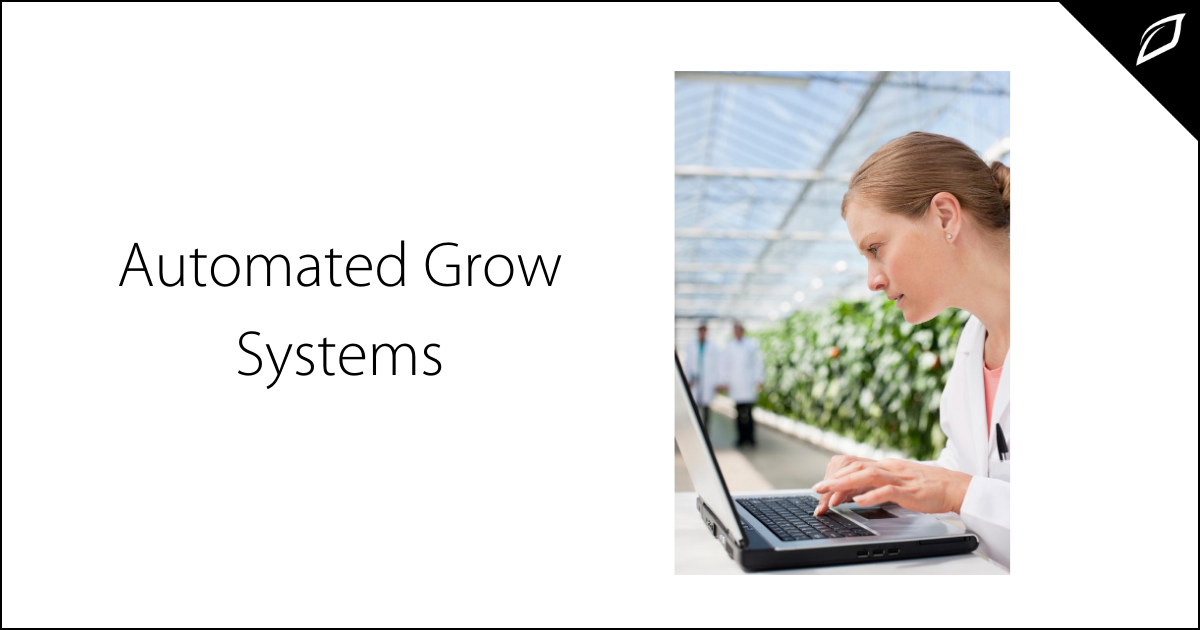VPD Basics For Indoor Cannabis Grows
With so many conditions to measure in a climate-controlled greenhouse or indoor grow, it can become overwhelming. Each condition has a potential...
2 min read
Joy King : Nov 6, 2020 4:45:00 AM
.png)
Collecting data in your indoor grow, or greenhouse provides critical information that directly impacts your cultivation operation's success. Acquiring an extensive understanding of critical crop level and environmental data helps you grow with confidence. So let's examine ways that big data can increase yields, provide more accurate crop predictions, and furnish you with some much-deserved peace of mind.
What is big data in indoor grows and greenhouses?
Data drives actionable insights into everything from irrigation, temperature, venting, feeding, and other environmental factors. To gain insights, first, you have to monitor and collect the data. Once gathered, you can use the data to maximize yields and growth with precision, taking the guesswork out of the labor-intensive tasks with specific automation.
Since many aspects of an indoor grow influence each other, like VPD and relative humidity, for example, you must monitor and collect data on as many key factors as possible. All this data drives predictability and enables quicker, more cost-effective interventions when problems occur as long as you're using a powerful operating system to assist you in analyzing all that data.
The effective use of data enables lower operational costs and more sustainable use of resources. A significant data trail with history means that if a grow regulator inspects the room, they can see exactly what steps were taken to stay compliant.
Making the most of your data points.
Every grow room and greenhouse are different, and what works for one grower may not for another. Gaining crucial insight into your data will help you create a custom solution. Sometimes overlooked, environmental data should be the first thing you concentrate on. Everything in your grow room has the potential to impact the overall health of your plants, and since they're your money makers, it's best to treat them with the utmost respect. Here's a list of the most important aspects to monitor in your grow operation using high-quality sensors.
Becoming familiar with data points allows you to collect more information. The more information you analyze, the better you'll understand every detail of your cultivation business. This takes time and consistency, but the benefits far outweigh the time-consuming aspect of analyzing data. Look into differing technologies that might streamline your data collection process. Find technology that makes it easy to combine all your data points into one place.
Benefits of analyzing your data.
The effective use of data enables lower operational costs and more sustainable use of resources. Deploying sensors is just the first step; how you manage data is critical. Look for partners who can help you collect your data in one place and quickly provide different views on various devices. Top technology providers can enable alerts when key indicators are out of tolerable ranges, trigger timers, or feed plants.
The right data-driven system, coupled with AI, machine learning, and with the data in comparable environments, means you use less harmful chemicals -- or none at all. That means lower energy cost, less waste, higher yield, and easier regulatory compliance. It's just smart business.
Big data is driving meaningful changes in the industry. It's an exciting time to be growing in the cannabis business.
.png?width=1200&name=Can%20Big%20Data%20Increase%20Your%20Cannabis%20Yield_%20(1).png)

With so many conditions to measure in a climate-controlled greenhouse or indoor grow, it can become overwhelming. Each condition has a potential...

Dr. Robert Flannery is the first Ph.D. in the United States with certified technical expertise in growing commercial cannabis. He earned his...

Increase yields and save valuable resources Automated grow systems have been used for many years to keep labor costs down. Whether it's lighting,...